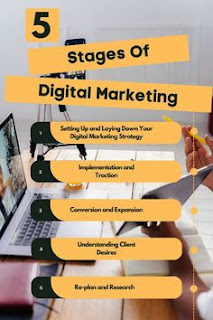"Digital Marketing Strategies for Small Businesses: A Comprehensive Guide"
Introduction
In today's digital age, small businesses need effective digital marketing strategies to compete and thrive. This comprehensive guide will explore the key strategies and tactics that can help small businesses establish a strong online presence and reach their target audience.
Section 1: Understanding Digital Marketing
- Define digital marketing and its importance for small businesses.
- Discuss the evolution of digital marketing over the years.
- Explain the benefits of digital marketing for small businesses, including cost-effectiveness and broad reach.
Section 2: Setting Clear Goals
- Emphasize the importance of setting specific and measurable goals.
- Discuss common goals for small businesses, such as increasing website traffic, generating leads, and boosting sales.
- Provide tips on setting SMART (Specific, Measurable, Achievable, Relevant, and Time-bound) goals.
Section 3: Identifying Your Target Audience
- Discuss methods for researching and defining your ideal customer personas.
- Provide examples of how understanding your audience can inform your marketing strategy.
Section 4: Content Marketing
- Explore the power of content marketing for small businesses.
- Discuss different content formats, such as blog posts, videos, and infographics.
- Offer tips for creating high-quality, engaging content that resonates with your audience.
Section 5: Social Media Marketing
- Explain the role of social media in small business marketing.
- Discuss the most popular social media platforms and their advantages.
- Provide strategies for building a strong social media presence and engaging with your audience.
Section 6: Search Engine Optimization (SEO)
- Dive into the basics of SEO and its importance.
- Explain on-page and off-page SEO techniques.
- Offer practical tips for optimizing your website for search engines.
Section 7: Email Marketing
- Highlight the benefits of email marketing, including cost-effectiveness and direct communication with customers.
- Discuss email list building and segmentation.
- Provide examples of effective email marketing campaigns.
Section 8: Paid Advertising
- Explore options for paid advertising, such as Google Ads and social media ads.
- Discuss budgeting and targeting strategies.
- Explain how to measure the ROI of paid advertising campaigns.
Section 9: Analytics and Tracking
- Emphasize the importance of tracking and analyzing your digital marketing efforts.
- Discuss tools and metrics for monitoring website traffic, conversion rates, and other key performance indicators (KPIs).
- Explain how data-driven insights can help refine your strategies.
Conclusion
In the highly competitive digital landscape, small businesses must leverage effective digital marketing strategies to succeed. By understanding their audience, setting clear goals, and utilizing various digital marketing channels, small businesses can achieve online visibility, engage with their customers, and drive growth.
By following the above outline and thoroughly researching and crafting each section, you can create a high-quality blog post that has the potential to rank well on Blogger's free domain. Additionally, don't forget to optimize your post's metadata, use relevant keywords naturally throughout the content, and promote it on social media and other online platforms to enhance its visibility and chances of ranking on page 1 of search results.



.jfif)

.jfif)
0 Comments